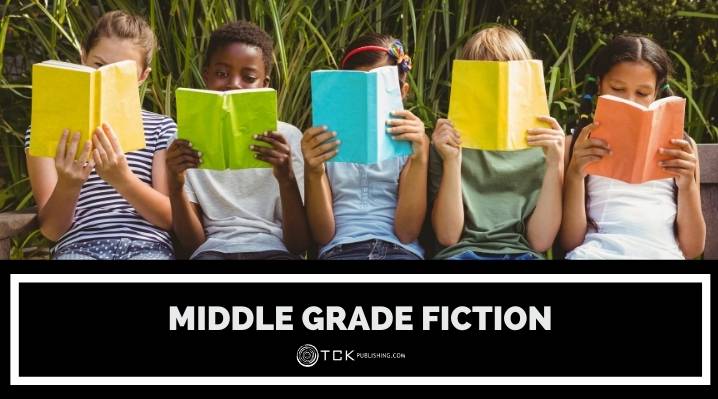
Has your kid outgrown picture books, chapter books, or other books designed for early readers? They may not be ready yet for the more mature themes of YA fiction, but they can definitely dive deep into the worlds that middle-grade fiction has to offer.
And while middle-grade fiction is intended for a younger audience, there’s no rule against adults enjoying them. In fact, the Harry Potter series, enjoyed by a wide variety of ages, is middle-grade!
What Is Middle-Grade Fiction?
Middle-grade fiction is fiction intended for children aged between 8 and 12. It’s also called fiction for the in-between readers. It serves as a bridge between simple children’s stories and reading materials that are more emotionally or thematically advanced.
It’s also important to note that middle-grade fiction (as is young adult fiction) is not a genre, but an age-based categorization. It reflects the reader’s reading level, worldview, and maturity. Within this category, stories can go under science fiction, fantasy, supernatural, and other fiction genres.
Typically, middle-grade fiction focuses on a character’s personal development, from who they are, what their values should be, and how they should interact with others. The answers to these are often answered by their friends, family, and other people in their immediate world.
So most middle-grade stories feature mentor figures, helpers, and allies. These people offer advice, clues, and otherwise help the protagonists navigate their lives, especially when they’re faced with something they’re unfamiliar with.
Here are a few questions that middle-grade fiction likes to answer:
- Who should I look up or listen to?
- What kind of relationships do I have with my family, friends, and other people?
- Which parts of my indentity do I want to explore or discard?
- What should I learn from the people around me?
- How do I fit in in my community?
- How do I handle conflicts?
Middle-Grade vs Young Adult
Most people separate middle-grade fiction from young adult fiction by their intended reading age. MG is meant for kids aged 8-12 while YA is for those aged 12-18. While that is true, both are also characterized by a few important elements.
Here is a simplified list of differences between these two categories of fiction:
| Middle Grade Fiction | Young Adult Fiction | |
|---|---|---|
| Intended Reading Age | 8-12 years old | 12-18 years old |
| Word Length | 30,000-50,000 on average | 50,000-75,000 on average |
| Point of View | Usually in the third person point-of-view | Usually in the first person point-of-view |
| Protagonists | 10-13 years old (usually in middle school) | 13-18 years old (usually in high school; for darker YA, protagonists are almost at college level) |
| Filters | No profanity, graphic violence, or sexuality | Can include profanity, graphic violence, or sexuality |
Keep in mind that MG and YA books don’t need to meet any of the above. If you’re writing any of the two, you can definitely go your own way. I do recommend following the no profanity, violence, and sexuality for a middle-grade novel though.
Middle-Grade Misconceptions
A common mistake with this category is that they don’t address complicated or difficult subjects. This may stem from the belief that children aren’t ready for such topics and so middle-grade fiction should “protect the children”.
On the contrary, many middle-grade stories tackle issues such as war, poverty, mental illness, and loss. Some people believe that introducing these things at an early age gives children a better chance of processing them. Of course, the effectiveness of this depends on how well these issues are handled.
Just because it’s complicated doesn’t mean it’s no longer middle-grade. You have to look at the bigger picture. Consider the setting, the character’s age, the words being used, and the emotions being conveyed. If they fit the general elements of middle-grade, then they’re likely part of the category.
Examples of Middle-Grade Fiction
To give you a better idea of what a middle-grade story is, here are a few examples that you can check out.
Because Of Winn-Dixie By Kate Dicamillo
During one hot summer, India Opal Buloni goes out for groceries and comes home with a dog. She names it Winn-Dixie and her life is changed from then on.
Because of Winn-Dixie, she’s finally able to make friends. And because of Winn-Dixie, she’s finally brave enough to mend things with her father.
Fish In A Tree By Lynda Mullaly Hunt
Ally is dyslexic but doesn’t know it. She thinks she’s dumb and hides her struggles with reading by creating trouble.
Good thing her new teacher sees past the disruptive child she pretends to be. And with her help, Ally may just learn that there’s more to her than what she thinks.
The Girl Who Drank The Moon By Kelly Barnhill
Every year, the Protectorate leaves a baby to the witch in the forest as an offering, hoping she doesn’t terrorize the town. But the witch, Xan, is kind, rescuing the babies and giving them to loving families who can nurture them as they grow.
When she accidentally feeds moonlight to a child, Xan decides on raising her herself. But raising a child can be difficult, especially when the said child is accidentally given tremendous powers.
If you want more, you can check out our post on middle grade books!
Reading Middle-Grade Fiction
There’s definitely an overlap between children’s books, middle-grade, and young adult fiction simply because there’s no “one size fits all” category. It’s similar to how the best genre doesn’t exist because people have different tastes.
So it’s a bit unfair when people view middle-grade fiction as “only for kids” as if it doesn’t offer any challenges or insights for the reader. While a particular book could be written for a specific age bracket, the ideas it contains can appeal to people beyond that target audience.
Take A Wizard of Earthsea as an example. During its first release, it garnered acclaim among children’s book critics, but a more lukewarm reception from fantasy critics because they viewed it as only a children’s book.
Now it’s regularly compared to fantasy classics such as Lord of the Rings. In fact, a popular concept in fantasy—the idea that true names have power—is credited to have been popularized, though not invented, by the book.
Books will always find a way to reach people who can appreciate what’s contained within their pages. It’s only a matter of time and opportunity.
So rather than focusing on the intended reading age, it’s better to read middle-grade fiction (or any book) and judge it by its content.
What middle-grade books did you enjoy reading? Share them in the comments below!
If you enjoyed this post, then you might also like:
- What is Commercial Fiction? Definition, Examples, and Common Myths
- Literary Fiction: Definition and Characteristics
- Fiction vs. Nonfiction: Breaking Down the Differences
- Children’s Literature Genres: The Difference Between Children’s Lit, Middle Grade, YA, and New Adult

Cole is a blog writer and aspiring novelist. He has a degree in Communications and is an advocate of media and information literacy and responsible media practices. Aside from his interest in technology, crafts, and food, he’s also your typical science fiction and fantasy junkie, spending most of his free time reading through an ever-growing to-be-read list. It’s either that or procrastinating over actually writing his book. Wish him luck!

I’m writing a fantasy about flying wolves with the main character a pup on his first flight. There are only a few humans in the entire story and I introduce scientific concepts about wolves throughout. Is this considered middle grade?